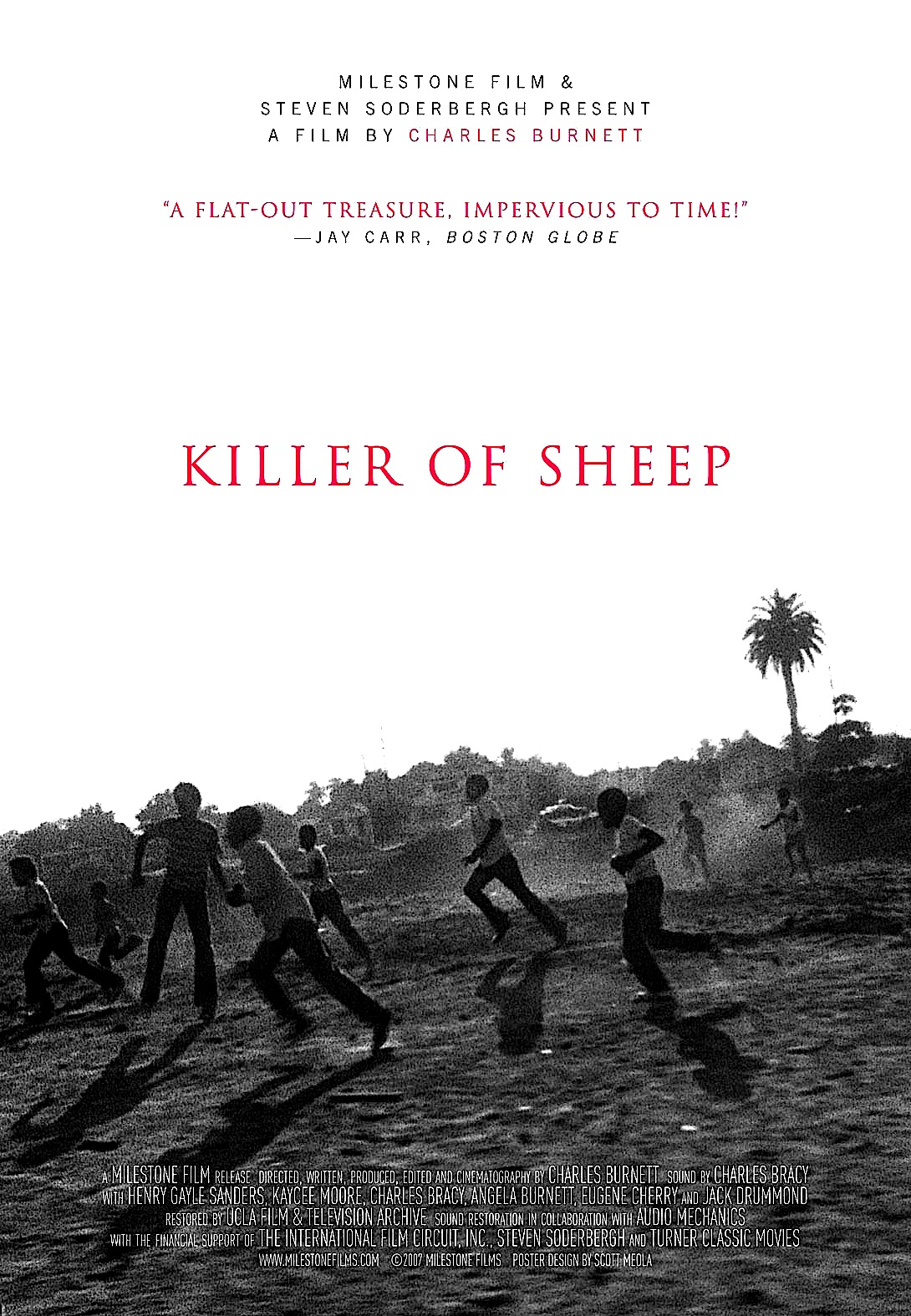 KILLER OF SHEEP (1977, directed by Charles Burnett, 83 minutes, U.S.)
KILLER OF SHEEP (1977, directed by Charles Burnett, 83 minutes, U.S.)
BY DAN BUSKIRK FILM CRITC
We take it for granted that most films that play theatrically will follow an orderly path to DVD but my troubled subconscious does contain a list of films that I worry may never again be seen. Will we ever again got the chance to ogle Jenny Agutter in Monte Hellman’s 1978 sex-driven western China 9 Liberty 37? Will the world ever get a chance to gasp at Joel DeMott’s documentary Seventeen, an unspeakably perverse journey into the world of good-for-nothing dope smoking teens in 1982? Will 1959’s City of Fear, the weird cheap-o fifties noir Channel 29 used to run late at night, ever turn up again now that its plot concerning a convict transporting a dirty bomb has taken on a growing relevance?
Takes me back to the days before home video, when film couldn’t be owned (except by obsessive 16mm devotees like Jay Schwartz ) it could only wished for and dreamed about, leaving movie lovers virtual slaves to the whims of programmers at repertory film houses and local affiliates. When I was a kid I used to sneak across my hometown theater’s lobby, nervously bend down and lift the film canisters, one in each hand and stand there with my knees shaking, trembling from the weight of the steel reels and the intoxicating idea that I was holding The Poseidon Adventure in my very hands. Shelley Winters and all!
Charles Burnett’s 1977 film Killer of Sheep is a widely-acclaimed film that has been pretty much impossible to get your hands on and it has ranked high on the list of films I made the effort to see because I might never get the chance again. Killer Of Sheep screened for one night only about 17 years ago at the U of Penn and I’ve spent years asking myself, “Did I really see that?” My disbelief stems in from the fact that Killer of Sheep isn’t really like any film I’ve seen before or since and yet it hints of a whole school of filmmaking that never materialized. Critically dubbed a classic despite the fact that music clearance rights were responsible for keeping it virtually unseen, Milestone Films has finally resurrected this film from its purgatory, finally giving a wide audience the chance to see this phantom masterpiece.
Shot in a weathered black and white that perfectly captures the ragged but beautiful world of L.A.’s Watts neighborhood in 1972 and ?73, the film ever-so-loosely revolves around Stan, a perpetually sleep-deprived husband and father of two, who is struggling to scrape by while working his de-sensitizing job killing sheep at a slaughterhouse. Even this slim synopsis makes the film sound more conventional than it really is, but Burnett constantly cuts away from Stan during the course of the film, his camera routinely distracted by the residents and especially the children of the neighborhood, as they fight, play in vacant lots or sing a pop song to their dolls. It’s this mix of scenes which illuminate the humanity of a man with an inhumane job, giving us a slowly-coming-into-focus portrait of a man on a block where desperation is everywhere, dignity is under constant attack and humor is your only weapon. And despite all the grimness, transcendence is always lurking in the shadows of Burnett’s frame.
Like the early comics of Harvey Pekar, Burnett is a master of the mundane, showing us moments that movies are usually uninterested in observing. Whether it’s Stan sitting at his kitchen table in the morning, trying to wake up, standing in line at the liquor store to cash his check or hauling those lambs into position for their slaughter, Burnett injects these routine scenes with a somber strength that sticks in the mind’s craw more pointedly than a hundred cliff-hanging highpoints of a hundred films.
So let me join in with the chorus of critics who have crooned that Killer of Sheep is the must-see of the season. When the Library of Congress formed the National Film Registry to ennoble the most important U.S. films, Killer of Sheep was named among the first 50 films, up there with The Wizard of Oz, Citizen Kane and The Godfather. If this evoked suspicions of tokenism, after seeing the film it is hard to think of the story of American Cinema not including this remarkable, singular work. Perhaps the more artistically-driven African American directors are destined to battle obscurity (see Charles Lane’s 1989 silent comedy Sidewalk Stories and Wendall Harris’ pitch black identity satire Chameleon Street for two other brilliant and ill-fated examples) but with Sheep finally emerging above ground it feels like more than a resurrected film, it feels like a big chunk of American cultural memory is being recovered as well.
